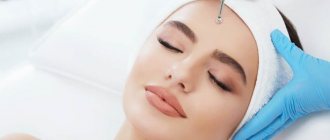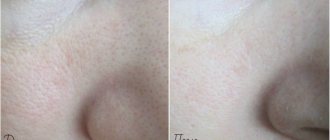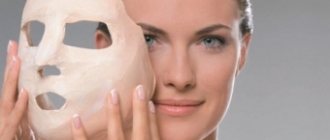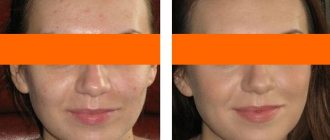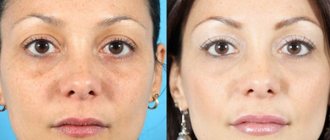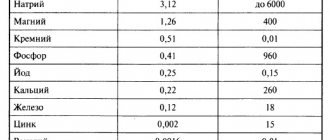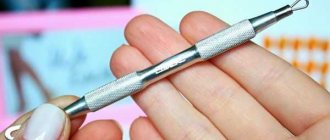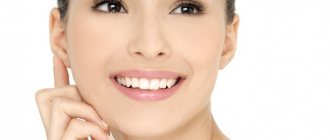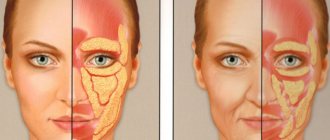Proper skin care is impossible without cleansing procedures. Only a clean face without blackheads looks fresh and attractive. You can have your hair professionally cleaned at a beauty salon or beauty clinic.
But what if you need to do it often, but there is no opportunity for this? How is facial cleansing done at home? What do you need to know before starting the procedure? These questions were answered by a cosmetologist at the Novoklinik Aesthetic Medicine and Cosmetology Center network, Isabella Airapetova.
What is facial cleansing and how does it happen?
Facial cleansing is the elimination of excess and contaminated contents of the skin pores, as well as the removal of the top layer of cells, which gives the face a visual staleness.
The Lifehacker Telegram channel contains only the best texts about technology, relationships, sports, cinema and much more. Subscribe!
Our Pinterest contains only the best texts about relationships, sports, cinema, health and much more. Subscribe!
There are several types of cleaning:
- mechanical (manual) - comedones are removed manually;
- ultrasonic - the skin is cleaned with a special ultrasonic scrubber;
- vacuum - they use a device similar in principle to a vacuum cleaner;
- galvanic - they work with a device with a weak direct current;
- chemical - acid peels are applied to the face.
At home, mechanical cleaning is usually used, since it does not require complex equipment. In addition, doctors and cosmetologists agree Which type of facial skin cleansing to choose and whether you need it / OMactiv / YouTube in the opinion that, based on a combination of parameters, it is the most effective and least traumatic.
Why facial cleansing is not a panacea
Once again I will say what I regularly tell my patients: cleansing is not a treatment for acne or comedones. This is a temporary struggle with consequences . Accordingly, bringing a temporary effect . If you don’t take any other measures, the same thing that was there will grow on your face in a month or two.
Although this, of course, is a “gold mine for a cosmetologist” - to cleanse the face of the same client every month until the end of his days. But this is a completely non-medical approach. Problematic skin should be treated, not cleansed.
I make a lot of home appointments for my patients; with one-time office procedures, the entire treatment process takes on average six months, with uncomplicated acne. However, it should be understood that the patient must have the determination to take care of his skin daily, in accordance with the recommendations, and in addition to pharmaceutical medications, purchase the right home care.
When to and when not to cleanse your face
Cosmetologists recommend that everyone do cleansing from time to time, because it makes the skin healthy. Is it not in vain that you cleanse your face? / Yuliana Shiyan / YouTube smoother, makeup fits better, and inflammation caused by clogged pores disappears. This procedure is especially recommended for those who have blackheads, comedones and uneven skin texture. However, cleaning also has contraindications Contraindication in beauty / Professional Beauty Direct. Here they are:
- skin diseases: herpes, eczema, dermatitis, psoriasis;
- acute colds or inflammatory conditions;
- hypertonic disease;
- facial paralysis;
- some cancers;
- menstruation period;
- dry sensitive skin.
Before cleaning, it is better to consult a dermatologist to avoid dangerous consequences. What are the dangers of mechanical facial cleansing / Amina Pirmanova / YouTube, such as spots, post-acne scars, enlarged pores, secondary infection and excess oily skin.
Which cleaning to choose?
So what kind of cleaning should you choose? In the salon or at home? This can only be determined by a cosmetologist based on the condition and type of your skin. Home facial cleansing is no worse than a salon cleansing, but there is always a “human factor”, because a non-professional may encounter a situation that they cannot cope with. The specialist will choose the type of cleaning that suits you personally, and can combine ultrasonic cleaning with manual cleaning. This will provide a guaranteed, long-term result.
Whatever method you prefer, remember - the main thing is not to take breaks. Coco Chanel also said that at the age of 25 a woman has the face that nature gave her, and at 40 she has the face that she deserved.
How to do facial cleansing at home
Wash your face
Tuck your hair under a headband or into a ponytail to keep it out of the way. Remove makeup as you usually do. Wash with warm water and a mild cleanser. Use a scrub or exfoliant to remove surface impurities and dead cells from the skin, massage your face a little with the applied product. If desired, you can make the scrub yourself.
Frame: Glamrs / YouTube
Open up your pores
If you have a facial steam sauna, use it. If not, then boil water in a saucepan, drop essential oil into it or add chamomile or mint - this is not necessary, but nice and useful. What Is Chamomile? /webmd. Lower your head over the hot water so that the steam warms but does not burn your face. Cover with a towel and wait 7-10 minutes until the pores open and their contents soften.
Frame: Glamrs / YouTube
Unclog your pores
Disinfect your hands with chlorhexidine. If you use a Uno spoon or comedone remover loop, soak it in chlorhexidine and blot it with a disposable tissue.
The tool must be positioned so that the clogged pore is in the middle of the hole. While pressing slightly, move the spoon to the side to squeeze out the contents of the pore. Do not press too hard to avoid damaging the skin.
Frame: Glamrs / YouTube
If you use your hands, use your fingertips to gently press the skin on both sides of the comedone until it pops out of the pore. It is better to do this through a sterile napkin. Never use your nails to clean your face: firstly, this will lead to injury, and secondly, there is a high risk of infection. If the sebaceous plug does not come out, do not press too hard, move on to another one.
Clean out other clogged pores in this way. Do not overdo it: if there are a lot of blackheads, it is better not to try to eliminate everything at once, but to repeat the procedure in a couple of weeks.
Close your pores
Treat your face with an antiseptic. Chlorhexidine or an alcohol-containing tonic with the effect of narrowing pores is suitable for this.
Frame: Glamrs / YouTube
Experts advise facial cleansing. How to do it correctly and without traces of execution / Geltek / YouTube After cleansing, apply a soothing and pore-tightening mask to your face, for example an alginate or clay-based one. Leave it for as long as indicated on the package, on average 15 minutes. Then rinse with warm water.
Moisturize your skin
Apply your usual moisturizer.
Frame: Glamrs / YouTube
Performing the technique in a cosmetology salon
The main point is to choose a professional and competent cosmetologist who is guaranteed to comply with sterility conditions.
Initially, the specialist conducts a consultation with the patient, examines his skin and sets a date for the procedure, having previously familiarized the client with all contraindications.
The manipulation itself takes place in several stages:
- Depending on the type of epidermis, it is cleansed using foams, gels, scrubs or gommage to remove dust, dirt, and cosmetic residues;
- involves mandatory steaming of the face using a professional device - a vaporizer, which acts on the skin surface with jets of steam in order to maximize the opening of the pores. You can do steaming using special cosmetic masks, creams or thermal lotions that have the desired effect;
- consists of directly cleaning the skin using sterile instruments and a sterile bandage, which the cosmetologist wraps around his fingertips. This manipulation must be performed within 20 minutes, otherwise the pores of the epidermis will then close and cleaning will not have the desired effect. If there are a lot of rashes on the client’s face, another steaming of the skin may be necessary. In this case, the places where contaminants exit the pores are treated with special antiseptic or alcohol solutions in order to prevent skin infection;
- consists of applying a mask to the skin of the face with a soothing, pore-tightening and healing effect. In some cases, the cosmetologist subjects the patient’s skin to darsonvalization to disinfect it and speed up its recovery.
Immediately after the session, it is recommended to stay in the salon for about half an hour so that the skin calms down a little, the pores close, and the risk of infection is minimized.
How to care for your skin after cleansing your face
- After the procedure, do not use Combined facial cleansing: a question for an expert / AYUNA school of cosmetology by Natalia Bakhovets / YouTube decorative cosmetics and avoid direct rays of the sun, because they can provoke excess pigmentation on injured skin.
- Do not visit the bathhouse or solarium for a couple of days, do not peel, or apply foundation.
- Use sunscreen on your face, preferably not only after cleansing, but also on an ongoing basis.
- Use products with fruit acids in your daily care - they soften the skin and promote gentle cleansing.
- Don't forget to pay attention to your diet and lifestyle.
What to expect after the manipulation?
Manual leather cleaning is an unpredictable process. Sometimes, even with a thorough procedure, the face may become slightly swollen, and in some cases, irritation and even minor bruising may occur. After manipulation, the skin can recover within 3-4 days - it all depends on individual sensitivity. Taking this into account, it is better to do the cleaning before the weekend or during the holidays, when you can spend a few days at home.
Despite all the pros and cons, mechanical cleansing is considered one of the most popular procedures: after all, the skin literally changes after it. Complications only occur if the procedure is not performed properly and recommendations are not followed in a timely manner. Among the consequences of cleansing procedures are:
- Irritation. Cool lotions with infusions of chamomile, sage, and soothing masks with aloe will help speed up recovery.
- Swelling. Usually subsides after 24 hours, in extreme cases – after 2 days. In case of severe manifestations, the doctor prescribes diuretics to eliminate swelling.
- Bruises. This is the result of excessive efforts to squeeze out pimples or ignoring contraindications. To speed up the resorption of bruises, use heparin ointment or compresses based on horse chestnut.
Photo by Anna Nekrashevich: Pexels
- Rashes. They may be the result of neglecting to disinfect hands and skin, or be a sign of some skin disease.
- Scars. Such marks remain on the surface of the skin when pimples are squeezed out incorrectly, for example, when using nails.
- Allergic reactions. They develop against the background of uncontrolled use of cosmetics.
The described manifestations can be supplemented by itching and hypersecretion of fat, which is inevitable at first. But after the specified period, the expected positive result appears. If undesirable manifestations persist for a longer time, this may indicate a violation of the cleaning technique, allergic reactions, or unaccounted contraindications. This condition requires consultation with a cosmetologist or dermatologist and strict adherence to their care or treatment instructions.
Mechanical cleaning effectively removes dead particles and excess oily shine. This will make your skin smoother and softer. If you wear makeup, you will definitely notice that exfoliation helps it to be more even. But to really enjoy the results of the procedure and minimize side effects, you need to have manual cleaning done by an experienced cosmetologist, using professional mixtures and high-quality tools.
Carrying out mechanical cleaning
Beginning with the steaming process, manual facial cleansing smoothly proceeds to treating the skin with a disinfectant. Usually it is 3% hydrogen peroxide or alcohol-free lotion. The liquid must be warm, otherwise the pores will close immediately. Then the cosmetologist performs a series of manipulations.
- At this stage, a special strainer or spoon is used to clean the face. Within 5-10 minutes, the cosmetologist removes fatty deposits, blackheads and dead skin cells. Do not touch inflamed acne for now. When cleaning, the instrument is constantly moistened in a disinfectant solution.
- To squeeze out blackheads, use a Uno spoon. It is placed perpendicular to the surface of the face so that the comedone is visible in the hole, and then the inflamed formation is squeezed out. This method is considered gentle because it does not injure the skin.
- To remove white pimples, the cosmetologist first punctures them and squeezes out the contents. The skin is immediately wiped with lotion. For aesthetic reasons, this process is rarely shown on video, but it is necessary to know about its existence.
- Finally, the pustules are drained. If some sebaceous plugs, blackheads or blackheads cannot be eliminated using tools, then they are removed manually.
- When the facial skin is completely cleansed of inflammation and fatty formations, it is treated with a disinfectant anti-inflammatory lotion.
Time for manual cleaning is limited, so the video usually does not show the entire process from beginning to end. Mechanical treatment should be carried out while the pores are open, that is, within 20-25 minutes. In such a period of time, you may not have time to remove all the rashes. Therefore, manual facial cleansing is performed in several sessions at intervals of 1-2 weeks.
Possible complications
Mechanical peeling can lead to a number of complications:
- Hematomas - appear due to excessive pressure on the skin or neglect of existing contraindications. To eliminate them, it is necessary to use heparin ointment.
- Swelling – if the procedure is carried out correctly, it goes away on its own within a few days. If after 2-3 days the swelling increases, this may be the cause of the disease or the manifestation of an allergic reaction - to identify the cause and eliminate it, you need to be examined by a dermatologist.
- Redness – with proper manual cleansing of the facial skin, this side effect goes away after 2-3 days. For persistent red spots, you need to apply soothing creams to your face, and also wipe your skin with decoctions of chamomile or calendula.
- Ulcers and scars. Inflamed rashes appear due to improper cleaning or non-compliance with care recommendations during rehabilitation. Problem areas should be treated with mixtures with a drying and antiseptic effect - if the problem does not disappear, you should visit a doctor. To eliminate scars, you need to perform cosmetic procedures recommended by a cosmetologist.
If mechanical peeling has led to an allergic reaction or the spread of an inflammatory process, it is necessary to select an antihistamine or antibacterial agent together with a specialist.
The essence of the method and methods of implementation
The procedure is a deep cleansing of the skin without the use of chemical compounds and ultrasonic equipment. It is considered the most effective in comparison with other types of cleaning. High performance is achieved through scrupulous and attentive processing.
Cosmetology offers two ways:
- Manual method. The skin is applied with fingers wrapped in a special napkin.
- Instrumental. The specialist works with instruments, a small special spoon, and a Vidal needle.
Most often, the cosmetologist uses 2 methods simultaneously, achieving perfectly cleansed skin .
The essence of the procedure
The essence of the facial cleansing procedure is that the cosmetologist, after preliminary expansion of the pores, cleans them of dirt, sebum of the skin glands and pus using fingers wrapped in a sterile napkin or special instruments.
Cleaning is carried out with the obligatory observance of massage and hygienic safety rules. There are several tools for mechanical facial cleansing:
- Meadow Uno.
- Vidal's needle.
Very often, mechanical cleansing is carried out as part of a combined facial cleansing. Since it is classical cleansing that allows you to remove blockages that are very deep in the pores, which cannot be achieved with ultrasonic facial cleansing or vacuum facial cleansing.
Recommendations after the procedure
After mechanical cleaning, be sure to follow the following recommendations:
- do not wash your face with water for 12 hours;
- use only lotions that do not contain alcohol in the first 7 days;
- you cannot swim, sunbathe in the sun or visit a solarium until the skin calms down;
- do not touch the formed crusts at the site of damaged pores to avoid scarring.
Swelling and redness disappear within 2 or 3 days. Cold herbal compresses can be used to relieve the condition.
